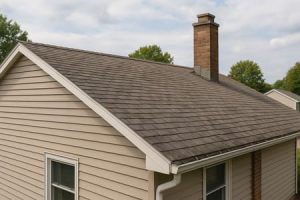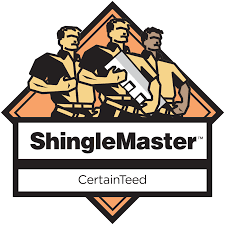Standing Seam 101: Panels, Gauges & Profiles Homeowners Should Know
Standing Seam 101: A Wautoma, WI Standing Seam Metal Roofing Guide to Panels, Gauges & Profiles

If you want a roof that handles Wisconsin winters without breaking a sweat, standing seam metal is hard to beat. This guide breaks down panels, gauges, profiles, and winter add‑ons so you can choose with confidence. For a quick overview of the options Goody’s Roofing Contractors installs locally, see our metal roof types page.
Why Standing Seam Fits Wautoma, WI Homes
Wautoma and nearby spots like Silver Lake, Mount Morris, and Redgranite see long freezes, spring thaws, and gusty storms. Standing seam’s interlocking vertical ribs keep fasteners concealed and protected from snow, wind, and rain. The smooth panel lines shed water and help reduce the risk of ice‑related leaks when paired with proper underlayment and ventilation.
Many lake cottages and ranch homes in Waushara County also benefit from the lighter weight of metal compared to heavy materials. Less weight can be helpful on older framing, and the reflective finishes can help manage attic heat when summer finally shows up.
Panels 101: Widths, Seam Heights, and Profiles
Most residential standing seam panels come in widths of 12, 16, or 18 inches. Narrower panels show more ribs and can help control “oil canning,” the cosmetic waviness that can appear in flat metal. Seam heights are commonly 1 inch, 1.5 inches, or 2 inches. Taller seams increase water tightness on low-slope sections and improve strength in windy spots.
You will also see panel surface choices such as striations, pencil ribs, or minor beads. These tiny breaks help the panel stay flat to the eye and add stiffness without hurting water flow.
Snap-Lock vs Mechanical Seam
Two common profiles are snap-lock and mechanically seamed. Snap-lock panels click together over clips. They install quickly and work well on typical residential slopes. Mechanically seamed panels are folded closed with a seamer tool after installation. This creates a tighter lock that shines on low-slope porches and weather-exposed areas.
If your home has a shallow back porch roof or wind-prone gable ends, ask your roofer whether a mechanical seam on those sections would add security. Many homes mix profiles to balance performance and budget.
Panel Widths and Rib Styles
Choice of width and rib style affects looks and performance. Sixteen-inch panels with subtle striations are a popular middle ground: clean lines, controlled oil canning, and efficient installation. Wider 18-inch panels can look modern on simple ranch homes, while 12-inch panels deliver crisp texture on cottages near Pleasant Lake or Mount Morris.
29 vs 26 Gauge: What It Means for Your Roof
Gauge is metal thickness. The lower the number, the thicker the steel. Many budget barns use 29 gauge with exposed screws. Standing seam for homes is commonly 26 or 24 gauge with concealed fasteners. Thicker steel helps resist denting and waviness and holds up better to winter loads and wind uplift.
For most Wautoma homes, 26 gauge is a smart baseline. It balances strength and cost, especially where tree branches or drifting snow might land on the roof. If you want extra stiffness or your site sees strong open‑field winds, consider 24 gauge for long-term durability.
Underlayment, Clips, and Expansion
Standing seam is a system. Underlayment, clips, and trim all matter. A high‑temperature, ice‑barrier underlayment at eaves and valleys helps defend against freeze‑thaw cycles and ice ridges along gutters. Above that, a quality synthetic underlayment provides secondary protection across the deck.
Clips secure the panels while letting them slide as the metal expands and contracts. In our climate, temperature swings can be large from January to July. Proper clip spacing and floating details at ridge and eaves reduce stress on the panels and seams. Expansion gaps and correct clip layout are not optional; they are what keep your roof quiet and tight for decades.
Paint Systems and Metal Types
Color and coating are more than looks. PVDF paint systems (often marketed as Kynar 500) offer strong fade resistance and chalk performance over time. SMP paints are fine for some uses, but for a long‑lasting residential finish, PVDF is widely preferred.
Steel is the most common choice here, with a galvanized or Galvalume substrate under the paint. Aluminum is useful near salt or heavy chemical exposure; most Wautoma homes do well with steel because of availability and strength.
Choose PVDF when color longevity matters. Dark grays, greens, and earthy browns fit naturally around the pines and lakes in central Wisconsin, while lighter grays reflect heat better in summer.
Snow Guards on Standing Seam: Stay Safe in Winter
Metal sheds snow quickly, which is great for the roof but not for your deck, shrubs, or entry steps. Snow guards hold snow in place so it can melt gradually. This is especially helpful above doorways, garage aprons, and walkways that face north or stay shaded along Silver Lake and in wooded lots.
- Bar‑style systems spread load across ribs and are ideal for long, uninterrupted runs.
- Pad‑style guards work in patterns above doors, vents, and lower roof edges to reduce slides.
Add snow retention above entries and over garage doors where slips and falling snow are most likely. Your installer will match guard types to your panel profile so clamps grip the seams without drilling the metal.
Snap-Lock vs Mechanical Seam: Which One Should You Pick?
Here is a simple way to think about it. If your roof has a typical slope and you want an efficient install, snap-lock is often the go‑to. If you have low‑slope sections, long panel runs, or high‑exposure sides that take the full brunt of west winds, mechanically seamed panels create extra security.
We often see a mix: snap-lock across most of the home and mechanical seams on front porches or shed‑style additions. That blend keeps the look consistent while dialing up weather resistance where needed.
Managing Oil Canning, Noise, and Other Myths
Oil canning is a visual ripple, not a leak. Striations, pencil ribs, and thicker gauges help reduce it. Your installer can also control panel width and fastening patterns to improve the look.
As for noise, a quality deck, underlayment, and attic insulation keep rain sound in check. Most homeowners are surprised by how quiet a properly built standing seam roof is. If your home near Wild Rose or Neshkoro has cathedral ceilings, mention it during design so the crew can adjust underlayment and attachment details for extra dampening.
Ventilation, Flashings, and Details That Matter
Standing seam performs best with balanced attic ventilation. A continuous ridge vent paired with intake at the eaves moves moisture and heat out of the attic. That airflow helps limit ice buildup at the edges and keeps your roof deck healthier.
Flashings protect tricky spots like chimneys, walls, and skylights. Quality hemmed edges, end dams, and kick‑outs at siding transitions are small details that make a big difference. Always hire a crew that fabricates custom flashings on site so every corner fits your home, not a one‑size guess.
29 vs 26 Gauge: Real‑World Scenarios
Homeowners ask about “29 vs 26 gauge” because it sounds like an easy way to compare roofs. Remember, standing seam is usually 26 or thicker. Thinner 29 gauge is more common on agricultural panels with exposed fasteners. If you live on an open lot with steady wind off the fields south of Wautoma, 26 gauge or even 24 gauge will resist dimples and flutter better over time.
For homes tucked into the trees near Mount Morris, branches and acorns can strike roofs through the fall. Thicker steel and striations help hide small surface marks and keep the roof looking smooth.
Color, Finish, and Curb Appeal
Color shapes the look of your entire exterior. Charcoal grays make stone and brick pop. Forest green blends with pines and lakeside settings. Matte finishes tone down glare and can disguise minor surface variations, while smooth gloss shows crisp reflections and a modern vibe.
If you plan to repaint siding or trim later, choose your roof color first. Roof paint systems last a long time, so let that be the anchor for the rest of your palette.
Choosing the Right Roofer in Wautoma
Standing seam takes skill. Ask about panel profiles, seam type, clip spacing, and snow‑guard layout. A pro should explain why they recommend snap-lock or mechanical seams on each part of your roof and show details for valleys, eaves, and penetrations.
For a deeper dive into system choices, our standing seam metal roofing guide is a good place to start. If you want to see panel options and other materials in one spot, browse the local metal roof types overview before you decide.
Winter Readiness: Snow Guards on Standing Seam
“Snow guards on standing seam” is a common search for a reason. Without them, a sunny afternoon can send a roof‑wide slide onto your steps or driveway. Your roofer will place guards in continuous rows or staggered patterns based on your roof pitch and panel layout so meltwater drains while snow stays put.
- Plan rows above entry doors, garage doors, and walkways.
- Use panel‑matched clamps that do not pierce the metal.
- Combine with heat‑safe underlayment at the eaves for ice control.
Maintenance Made Simple
Standing seam is low maintenance. Keep gutters clear so water has a path during thaw cycles. Trim branches that touch the roof. From time to time, a quick visual check of snow‑guard rows and ridge caps is smart, especially after a big storm.
Never walk on seams or clamp hardware. If you need service, call a pro. A quick tune‑up visit is faster and safer than a risky DIY climb.
Ready To Compare Options?
If you are weighing snap-lock vs mechanical seam, panel widths, or 29 vs 26 gauge, you are already ahead of the curve. The next step is a roof evaluation and a simple plan matched to your home’s slope, wind exposure, and winter patterns around Wautoma, WI. Reach out to Goody’s Roofing Contractors at 920-787-7458 and we will walk you through samples, colors, and snow‑guard layouts that fit your home.
When you are ready to see materials side by side and finalize details, you can also explore local options on our see roof types page.














